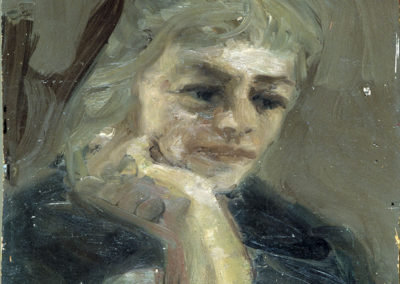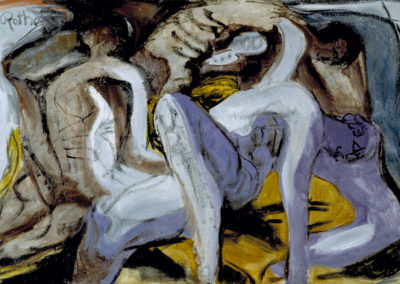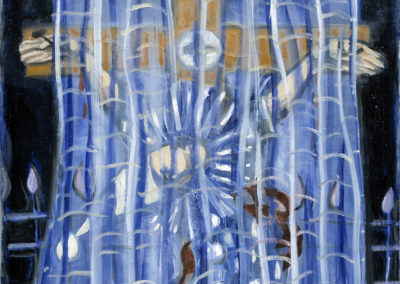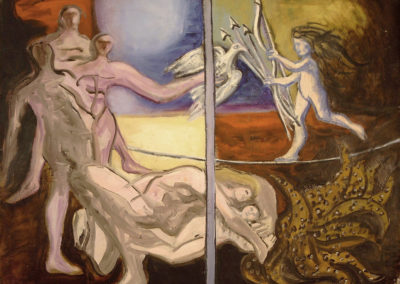Rudolf Rothe

Rudolf Rothe,
born in 1927 in Wuppertal, was in 1946 one of the first students at the Düsseldorf Art Academy, still in ruins. He had attended the Werkkunstschule in Wuppertal and started an apprenticeship which he was unable to complete due to the events of the war. His creative abilities finally found the freedom to develop after the end of war and Nazism. He discovered classical modernism and all the creative diversity that could not be seen in previous years, worked with great vigour and quickly found recognition.
In the mood of optimism of this time there is much energy and impatience, a constant presence of stressful and oppressive experiences from the recent past, and – as for many of the young generation of artists – an existential question about the value of cultural heritage and an urgent desire for a comprehensive new beginning. Rothes’ understanding of art remained classically formed in the sense that his painting always represented the world even when it was about its destruction and the fear of its loss. Probably the influence of his teacher Otto Pankok is important for this, too. While others came from the rejection of all traditional art forms to action art, propagated an art without art, and some of them actually found a new artistic definition and a new classic through it, Rudi Rothe dealt quite counter-cyclically with the painting of Mannerism and the Baroque and developed from it his artistic project and his special style.

Rudi Rothe at the age of 16

Werkkunstschule: Classroom.
Rudi Rothe stands backwards at the door
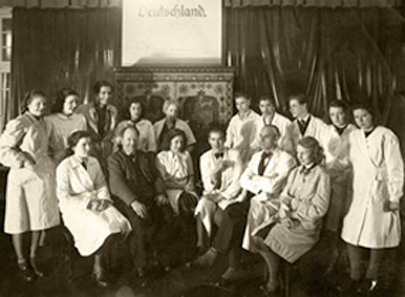
Werkkunstschule: Group with teachers.
Rudi Rothe is the third from the right in the standing row.
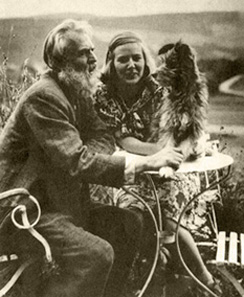
Eva and Otto Pankok 1946

Wedding Claire und Rudolf Rothe

At the beginning of the 1960s he realizes his best known oil paintings: large groups of figures, often dramatically and darkly tinted by violent brush strokes, the figures themselves often staggering and falling. In spite of the impulsive gesture, these pictures are beared by an elaborated conception determined by scenic posture and movement, but whose basic concept remains figurative and thematically structured.
In this old fashioned position an original work is created, in which the tensions of the beginning are preserved and carried on, and whose intensity is accompanied by a certain peacelessness. His mastery brought him respect and recognition, both from the public and the institutional point of view, but his fame was essentially limited to Wuppertal and Düsseldorf and their art scene.



In 1966 Rudi Rothe suffers a serious traffic accident, which he survives only reduced and badly handicaped, and as a result of which his career breaks off. His painterly skills again help him to rebuild himself. New elements and a new colourfulness appear in his paintings; a naive-looking gesture can perhaps be interpreted in such a way that the painter now feels free from obligations and considerations of art-theoretical contexts and social expectations. But Rothe’s new style of painting also serves the existential necessity of understanding the world, of making sense of it, and of appeasing his own restlessness.
For several years the new and the old style coexisted, and Rothe even continued with work that had remained unfinished due to the accident. Later, his pictures change again and become more and more filled with elements of a private theatre. It was only about the year 2000 that he stopped painting.
Rudi Rothe died at Wuppertal the 31 of January 2018.
He left behind an extensive oeuvre of prints and about 150 paintings. Some are in public collections, especially in the von-der Heydt Museum in Wuppertal, others in private hands. A larger collection is in the possession of the family. Some paintings made after the accident found their place in the Prinzhorn collection of the university hospital in Heidelberg. Also worth mentioning is the Marius Eriksen Foundation in Oldenburg, which has a number of paintings and a larger collection of prints from the early creative period. The ownership of a large part of this collection is unclear. The Foundation seems to want to dispose of the collection at present (autumn 2019).
Parts of the work have been shown sporadically over the past 40 years, most recently in March / April 2011 at the Düsseldorf Landtag.
It is planned to transfer Rudi Rothe’s work into a foundation. finis artis supports this project.
© finis artis
Authorized printing only

Rudi Rothe in spring 2011







